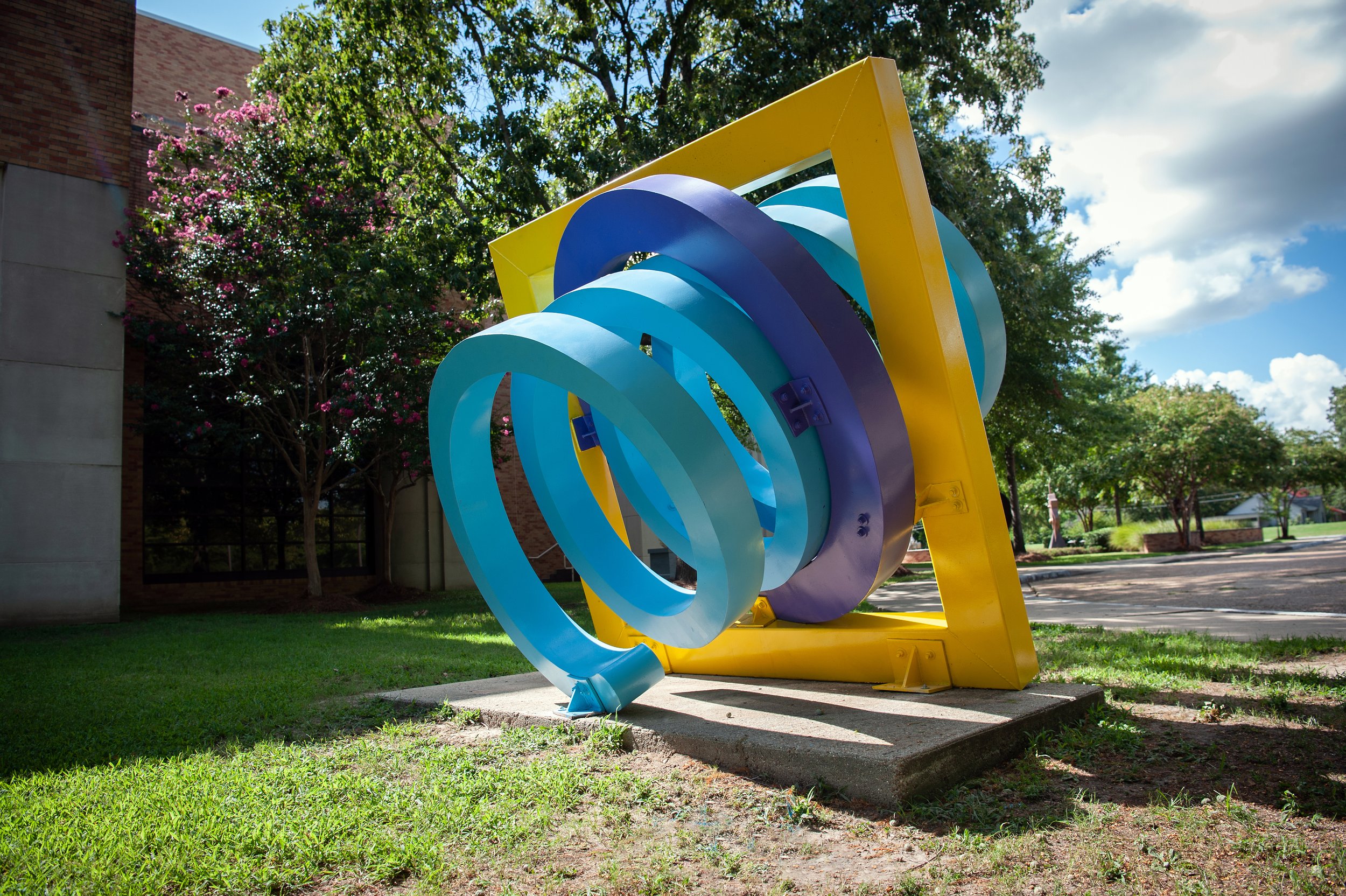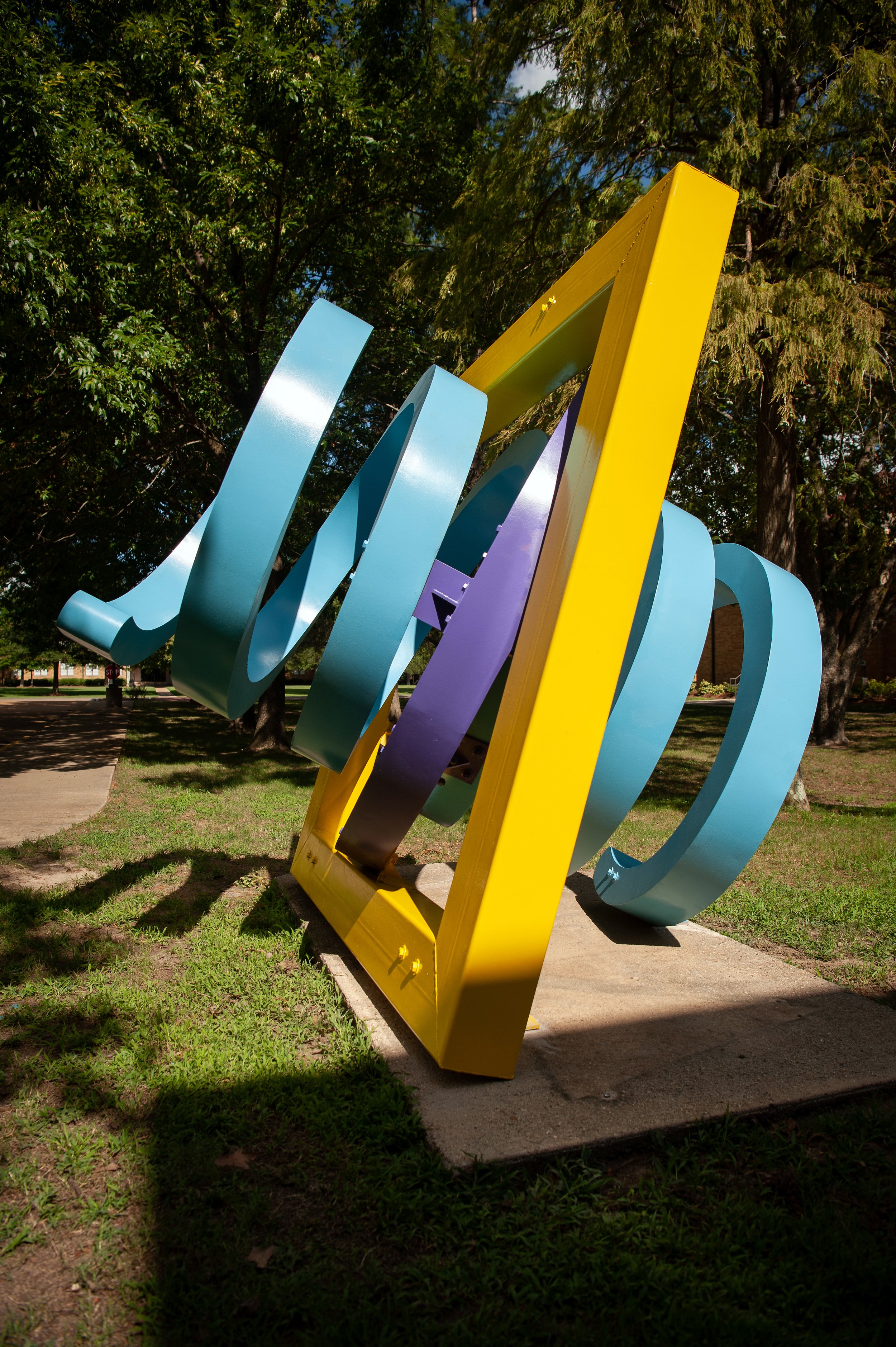Ray Katz was born and raised in Detroit Michigan. He served on active duty in the United States Air Force for 4 years before attending College. He has a B.S. from Eastern Michigan University an M.F.A. from Wayne State University in Detroit, Michigan. Ray taught Sculpture, Drawing and Design at Oakland Community College in Auburn Hills MI for 48 years. During that time Ray maintained a welding and fabrication studio in Pontiac, MI on 5 acres of reclaimed industrial land and buildings. Ray is best known for his large-scale metal sculpture but works successfully in a wide range of media. Ray has exhibited sculpture publicly and privately throughout the Mid-West, Mid- South, West, and overseas in Paris, France and Tokyo, Japan.
Ray uses color because the properties of color are associated with social, political and spiritual beliefs inherent in the cosmology of all people. Color activates the elements and gives visual meaning to the organization of the abstract forms that he manipulates to create visual balance, using rhythm, action and movement. The implied energy of his compositional structures has become a hallmark of his work and is a metaphor for an evolutionary process that he associates with human experience. Through the creative process a hierarchy of elements, become symbols for ideas, that are a tribute to the transcendental experience we all share in common, and in the transcendent experiences inherent in life’s journey.
Katz describes his compositions as abstract. The abstract manipulation of form in space to create visual balance, contributes to rhythm, action and movement. “My creative process requires organizing separate parts into a whole. I fabricate separate hollow forms and shapes and then intentionally combine them into compositions. I let the process of creation happen organically and quite spontaneously, instinctively and intuitively. The assemblage adds to the aura of complexity in the work. The activated forms are brought together to represent the flux of life and embrace transformative concepts such as evolution, metamorphosis and transcendence.”






